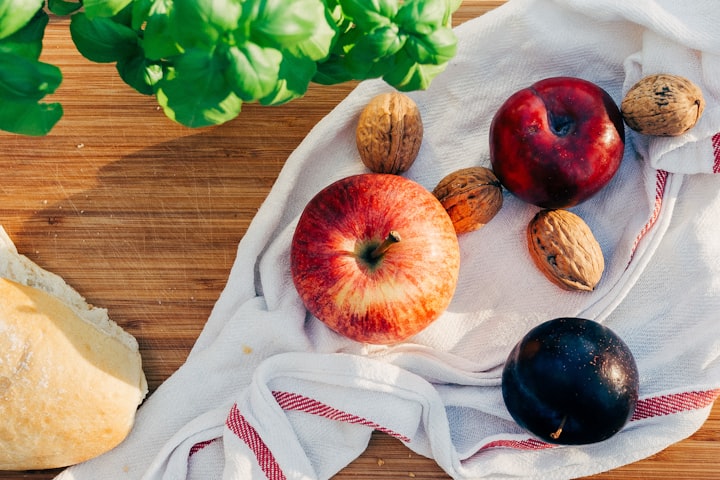Include 10 Magnesium-Rich Foods in Your Diet
Magnesium Rich Foods to Include in Your Diet

Magnesium is a vital micronutrient that is required for a variety of bodily activities. This vitamin is necessary for strong bones, calcium absorption, food metabolism, fatty acid and protein synthesis, and neuron function. Magnesium insufficiency manifests itself in a variety of ways that are easy to overlook. Magnesium protects against muscle cramps, exhaustion, arrhythmia, dizziness, nausea, numbness, insomnia, brain fog, and anxiety, to name a few. Eating the incorrect foods, heavy alcohol intake, some prescription drugs, high-sugar diets, overuse of acid inhibitors, and leaky gut syndrome are all possible causes of insufficiency. All of these factors can lead to a lack of magnesium in the body, therefore it's critical to include magnesium-rich foods in your diet.
Magnesium is involved in 300 metabolic activities in the body, according to study. Making sure you eat enough magnesium-rich foods is one method to avoid magnesium shortage. Below is a list of ten typical foods that you may include in your diet throughout the day to acquire not only magnesium, but also all of the other nutrients that magnesium needs to be utilised and absorbed efficiently in the body.
Foods Rich in Magnesium
1. Nuts

Magnesium is abundant in cashews, Brazil nuts, and almonds. In a one-ounce serving, cashews provide 82 mg, or 20% of the recommended daily requirement (RDI). They're also high in selenium, fibre, and monounsaturated fats, which all assist to keep blood sugar and cholesterol levels in check. Nuts have anti-inflammatory properties and can aid with heart health. They're a fantastic evening snack to protect glucose levels from dipping too low and disrupting sleep. However, nuts are high in fat, so don't consume too many of them. 2 ounces of nuts 1-2 times a day is a good serving size.
2. Legumes

Lentils, black beans, chickpeas, peas, and soybeans are examples of legumes that are high in protein. They are, nevertheless, quite high in magnesium. One cup of black beans contains 120 milligrammes of magnesium, or 30% of the recommended daily intake. They also provide potassium and iron, as well as a source of vital protein and fibre for plant-based diets. Legumes are a powerful ally in the fight against one of the world's most pressing problems: heart disease.
3. Organic Tofu

Protein and magnesium are abundant in tofu. It's prepared from soybean milk curdled into little white curds. Because soy crops are the longest-growing and so extensively sprayed with pesticides, choosing organic tofu is critical. Soy is an excellent source of protein and magnesium, particularly for vegans. A 3.5-ounce portion contains 13 percent of the RDI for magnesium, or 53 mg. Calcium, iron, selenium, and manganese are some of the other minerals included in tofu.
4. Chocolate

Do you have a strong desire for dark chocolate? Magnesium is one of the minerals that may be beneficial. The magnesium content of a small dark chocolate bar is 226 milligrammes per 100 grammes. It also contains iron, antioxidants, manganese, copper, and prebiotic fibre, among other minerals. Moderation, on the other hand, is essential. Because of the high sugar level in store-bought chocolates, only a little amount should be consumed each day. Dark chocolate in small amounts can be beneficial to heart and digestive health. Dark chocolate with a cocoa content of 70% or more is the finest choice.
5.Avocados

Avocados can be incorporated into your diet in a variety of ways. This fruit provides 58 mg of magnesium, or 15% of the RDI, whether you add slices to a salad, combine them into a smoothie, or make guacamole. Vitamins K, B, potassium, monounsaturated fats, and fibre all combine in this fruit to make it one of the most nutritious foods available. Avocados also aid in weight loss by lowering cholesterol, reducing inflammation, and increasing feelings of fullness.
6.Bananas

This is one among the most frequent fruits seen in most homes. Bananas are known for their high potassium content, but they also contain roughly 37 mg of magnesium. Fiber, vitamin B6, and vitamin C are among the other nutrients it contains. It is preferable to eat bananas that are little less ripe than their ripened counterparts. When baby bananas are eaten, the starch remains intact. It makes its way to the big intestine, where gut bacteria break it down. Surprisingly, this also works well as a prebiotic to boost intestinal health. Furthermore, ripe bananas have more carbs and sugar.
7.Oysters

In just 3 oz. of oysters, you'll get 37 mg of magnesium, or 9% of your daily value. Yes, oysters are high in magnesium, but they're also high in zinc and copper, with over 188 percent DV of zinc and 114 percent DV of copper! They include omega-3 fatty acids, protein, and vitamin D, just like fish. These micronutrients serve as building blocks for vital biological functions such as DNA synthesis, bone and tissue repair, cognitive function, and disease prevention anti-inflammatories.
8.Organic Leafy Greens

The dark leafy green family is another crop that must be purchased organically. Nature enjoys eating these greens just as much as we do. To avoid this, these crops are intensively treated with chemicals if they are not farmed organically. This is especially true for root plants, which receive treatment from the soil over numerous seasons. Leafy greens are a popular manganese-rich food that's also high in other vitamins like A, C, and K. Around 40% of the RDI of magnesium is found in one cup of cooked spinach. Mustard greens, kale, turnip greens, and other members of this family all aid in the oxidation and detoxification of cells, which helps to prevent cancer. A handful of spinach can be added to any fruit smoothie.
9.Seeds

Magnesium-fortified foods include chia, pumpkin, and flaxseed. A one-ounce serving of pumpkin seeds contains 150 mg of magnesium, which is 40-50 percent of the recommended daily intake. One tablespoon of flax or chia seeds contains about 40 mg of magnesium, or 15% of the recommended daily intake, as well as iron, antioxidants, fibre, and monounsaturated fats. These seeds are also high in omega-3 fatty acids, which support brain and heart function. Add ground flax to your cereal, smoothies, salads, soups, and sauces to improve cognitive performance. You may also construct a trail mix using seeds, nuts, your favourite dried berries, and granola, which makes a great snack.
10.Fatty Fish

Magnesium-rich fish include wild caught salmon, mackerel, and halibut. The magnesium content of 180 grammes of salmon is 13% of the RDI. Salmon also contains omega-3 fatty acids, which aid in the prevention of heart disease. There are 39 grammes of protein, B vitamins, selenium, and potassium in 180 grammes of salmon, all of which complement magnesium for a healthy heart and brain.
About the Creator
Health care
Health care






Comments
There are no comments for this story
Be the first to respond and start the conversation.